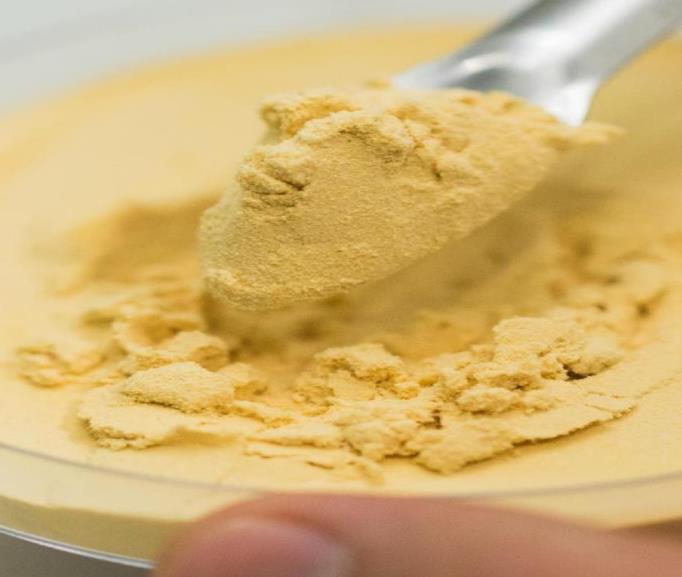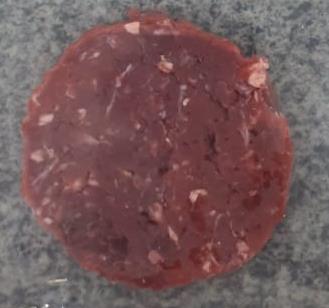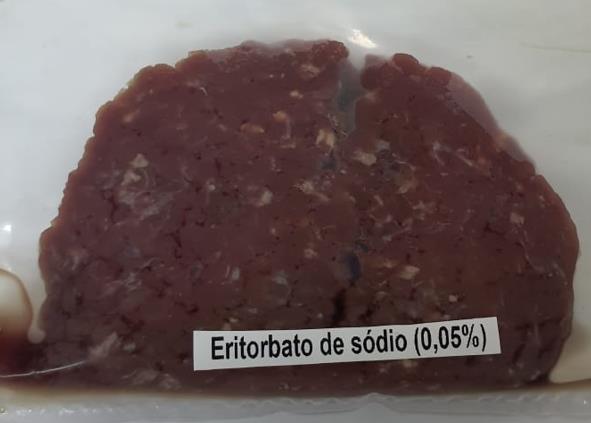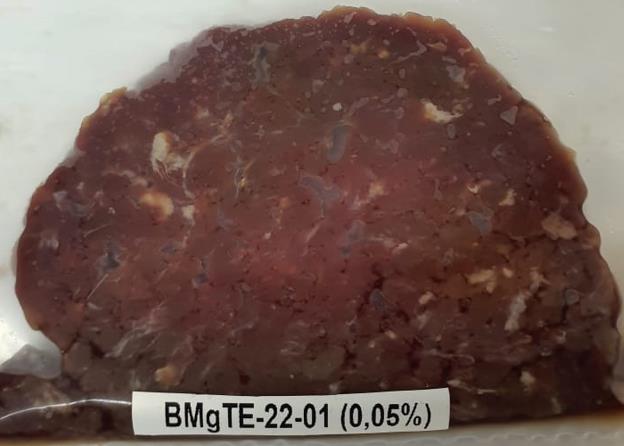Introduction
Acerola (Malpighia glabra L., or Malpighia emarginata DC.) is a tree whose fruit is called Barbados or Antillean cherry due to its similarity to the fruit. Little tree (or shrub) with persistent foliage from the Malpighiaceae family, the acerola grows spontaneously in the tropical regions of South America, particularly in Peru and the Amazon forests of Brazil and from Venezuela.
It is also present in the Antilles, where it is called wild cherry. A nutritional composition of fresh acerolas and of unprocessed acerola juice, shows that the fruit presents excellent sources of vitamin C, carotenoid precursors of vitamin A and lycopene, in addition to containing considerable amounts of thiamine, riboflavin, niacin, pantothenic acid, calcium, iron and magnesium (USDA, 2016).
Ascorbic acid (vitamin C) is a water-soluble vitamin with strong properties reducers. It is one of the reducing compounds most used in meat processing. Furthermore, acts as an antioxidant, stabilizer and acidity regulator. As a result of oxidation, oxygen free and dissolved is removed from the environment and is responsible for the reduction of some compounds. (VIEIRA & SANTOS, 2010).
Sodium erythorbate is the sodium salt of erythorbic acid or isoascorbic acid, which is an isomer of ascorbic acid. Erythorbate is used in meat products with the main functions of accelerate color formation and stabilize the characteristic color of meats cured with nitrite due to of its high reducing power.
In addition to the reaction with nitrite, erythorbate itself has a strong antioxidant effect, preventing the development of oxidative rancidity, when applied to appropriate concentrations. The reducing activity in raw meat plays an important role in prevention of oxidation, with the addition of substances that provide electrons for metmyoglobin kept the meat in a reduced state, effectively delaying oxidation(MARTINEZ-VALVERDE; PERIAGO; PROVAN, 2002).
Ramalho and Jorge (2006) showed that the trend for Clean Label is well established in market for food products, nutraceuticals and cosmetics. Naturalness is one of the keys to the successful commercial launch of products that have appeared on the market in recent years, and this is especially true in a context where the consumer clearly understands the risks incurred after ingestion of synthetic compounds and where the laws governing the framework for the use of food additives is in force, as evidenced, for example, by the draft list revision of authorized additives mentioned in Regulation (EC) No. 1333/2008 of the European Parliament and of the Council.

The Clean Label character is a decisive element when purchasing, and formulating products free from any substance unknown to people is a serious challenge that industrial mentioned sectors seek to confront. The conception of so-called “natural” consumer products suggests using ingredients that are also described as “natural”.
Therefore, replacement of vitamin C (a generic term that covers several forms, including ascorbic acid, isoascorbic acid or erythorbic acid, ascorbate salts and erythorbate) is a challenge that must be taken into account the extension of its range of applications. For example, replacing sodium erythorbate in sausages such as injected products (cooked ham) or emulsion-type products (sausages) for a natural ingredient that performs the same antioxidant function, if possible, with less inconveniences, is an issue raised by many industries today.
Raw Material
The raw material is ground beef from the soft coxão cut, used in experiment was acquired in a slaughterhouse located in the city of Ubajara-CE (Figure 2). Acerola juice concentrated and dehydrated (Figure 1) came from the Amway Nutrilite do Brasil LTDA Farm from selected and recently produced batches. The sodium erythorbate additive was purchased from the company Adicel that supplies the northeast region.

Concentrated and Dehydrated Acerola Juice
The product is produced from non-GMO acerola (Genetically Modified). Tests are carried out from receipt of the raw material until the end of the concentration process to ensure the best quality. The flow is formalized in the code document: MFG-STD-0014, HACCP PLAN, version 23.
Experimental Planning
On 05/27/2024, the inputs intended for testing were weighed. A ground beef (coxão soft cut) was separated into 30 portions of 100g to prepare the hamburgers, the inputs were added by direct application without adding water and stored in properly sealed polyethylene bags.
Records were made photographic and visual evaluation (coloring), vitamin C analysis and color analysis by spectrophotometry during the first week of evaluation. Monitoring the hamburgers was performed daily throughout the experiment, which lasted 22 days. The burgers were stored at a temperature of 0 to 2°C as recommended of SDA ORDINANCE No. 664, OF SEPTEMBER 30, 2022.
For the experiment, sodium erythorbate, three items of acerola juice were used dehydrated with 15% vitamin C and an item of acerola juice dehydrated with 5% vitamin C, as well as the use of concentrated acerola juice with 18% vitamin C. Six treatments were used and five concentrations were evaluated in each treatment as presented in table 1. The physicalchemical analyzes of the inputs were carried out on the same day that the application was carried out in the meat matrix. See table 2.


Results and Discussion
After 22 days of evaluation, it was possible to observe that the treatments that used acerola as a preservative in different concentrations had vitamin C content at the end of the experiment. See table 3.

Visual Analysis of the Experiment
To present the evaluation of each product in the study on the application of antioxidants in meat products, we will consider the results obtained in relation to conservation, color, flavor and health benefits for consumers:
Sodium Erythorbate
It showed better results at concentrations of 0.05% (Figure 3).

Dehydrated acerola juice (BMGTE-22-01)
During the experiment it is possible to demonstrate that the samples of the acerola juice dehydrated at a concentration of 0.30% (Figure 4) showed better performance when compared to other concentrations and other formulations, and this is due to vitamin C acting as a natural antioxidant and guarantees the stability of the food.
Contributing to ensuring the softness and shine of food and therefore stood out as the best performing natural product. It also presented better results in terms of performance. It stood out for being effective in preserving the color, flavor and natural pigment of meat, in addition to adding health benefits to consumers.

Conclusion
Dehydrated acerola from item BMgTE-22-01, which would be the was the one that showed the best performance. In view of that dehydrated acerola juice stands out for being a natural ingredient, its applicability in meat products it favors the preservation of color, flavor, natural pigment, and adds health benefits for consumers due to the use of antioxidants of natural origin.
References
AGÊNCIA NACIONAL DE VIGILÂNCIA SANITÁRIA. Portaria n° 540 de 12 de outubro de 1997. Aprova o regulamento técnico: Aditivos alimentares – definições, classificação e emprego. Diário Oficial da União. Brasília, 1997.
ARAÚJO, J. Química de alimentos: teoria e prática. 2ª ed. Viçosa: Editora UFV, 1999. 416p., 2015.
BRIDI, A.M.; SILVA, C.A. Avaliação da carne suína. Londrina: Midiograf, 2009. 120p.
BOAKYE, K.;MITTAL, G.S. Changes in colour of beef M. Longissimus dorsi Muscle during ageing. Meat Science, v.42, p. 347 – 354, 1996.
DAMODARAN, S.; PARKIN, K.; FENNEMA, O. R. Fennema’s food chemistry. 4. ed. Boca Raton: CRC Press, 2008. 1144 p.
INSTITUTO ADOLFO LUTZ – IAL. Métodos físico-químicos para análise de alimentos. 4 ed. São Paulo: Instituto Adolfo Lutz, 2008. Disponível em: http://www.ial.sp.gov.br/resources/editorinplace/ial /2016_3_19/analisedealimentosial_2008. pdf. Acesso em: 20 out. 2018.
MARTINEZ-VALVERDE ,I,; PERIAGO, M. J, PROVAN, G. Phenolic compounds, lycopene and antioxidant activity in commercial varieties of tomato (Lycopersicum esculentum). Journal Science Food Agriculture, v. 82, n. 3, p. 323-330, 2002.
MELO, A. A. M.; VILAS BOAS, E.V. B. Inibição do escurecimento enzimático de banana maçã minimamente processada. Ciência e Tecnologia de Alimentos, Campinas, v. 26, n. 1, p. 110-115, jan.-mar. 2006.
OLIETE, B.; MORENO, T.; CARBALLO, J.A.; VARELA, A.; MONSERRAT, L.; SÁNCHEZ, L. Influence og ageing time on the quality of yearling calf meat under vacuum. European Food Research and Technology, v. 220, p. 489 – 493,2005.
RAMALHO, V. C.; JORGE, N. Antioxidantes utilizados em óleos, gorduras e alimentos gordurosos. Química Nova, v. 29, n. 4, p. 1-11, 2006. Regulamento Técnico de Identidade e Qualidade de carne moída, PORTARIA SDA Nº 664, DE 30 DE SETEMBRO DE 2022.
Regulamento (CE) n. o 1333/2008 do Parlamento Europeu e do Conselho de 16 de Dezembro de 2008 relativo aos aditivos alimentares.
SUCUPIRA, Natália Rocha; XEREZ, Ana Caroline Pinheiro; SOUSA, Paulo Henrique Machado. Perdas vitamínicas durante o tratamento térmico de alimentos. Unopar científica. Ciências Biológicas e da Saúde, 2012. Disponível em: http://www. Destaques Acadêmicos, Lajeado, v. 11, n. 4, p. 36-55, 2019. ISSN 2176-307055pgsskroton.com.br/seer/index.php/JHealthSci/article /viewFile/ 1025/984. Acesso em: 18 ago. 2018.
USDA. National Nutrient Database for Standard Reference. Release 28. Revised, May 2016. Disponível em: http:/ https://ndb.nal.usda.gov/ndb/search/list/acerola. Acesso em: 20 dez. 2016.
VIEIRA, Denise A.; SANTOS, Pauline S. Avaliação da Atividade Antioxidante das Folhas de Acerola, Araçá – Roxo, Goiaba, Guabiroba, Jabuticaba, Ora-Pro-Nobis e Pitanga. 2010. 48 f. Trabalho de Conclusão de Curso (Graduação) – Curso Superior de Tecnologia em Processamento de Alimentos Vegetais. Universidade Tecnológica Federal do Paraná, Campo Mourão, 2010.
VOGEL, Arthur Israel. Análise química quantitativa. 6 ed. Rio de Janeiro: LTC, 2013.

